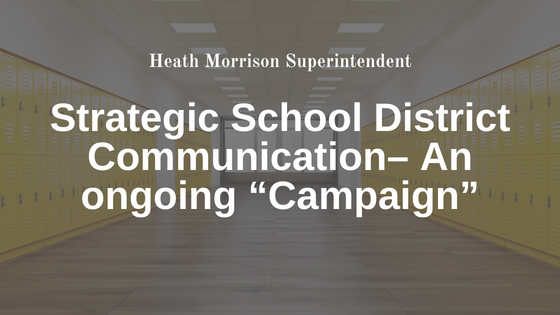An effective superintendent understands that clear, consistent communication is key to paving a pathway to success for everyone in the organization. Engaging district leaders in two-way communication provides valuable, actionable feedback and supports an environment of mutual respect and cooperation. Listed below are several groups a Superintendent might consider when creating a multi-pronged communication network:
- A student leadership group comprised of high school students might gather to share input and feedback about their student experience. Students lend a critical, often underrepresented voice, sharing vital information with district leaders. The relationship between the district and this student group can improve communication by providing students a consistent, district-level forum to share concerns.
- The superintendent may meet with campus PTO/PTA leaders to hear parent input and share information about district initiatives. These leaders serve as a voice for parents at their campuses. Input from this group can help lead district-level initiatives including administering a survey of students to gather input on the challenges they are facing, with survey results informing a series of Parent Nights to discuss topics including substance abuse, mental health, and growing up in the digital age.
- The superintendent may consider meeting with faith-based leaders to hear their perspectives and to commit to working together to strengthen partnerships and share resources to support students and families.
- Teachers can be invited to participate in a leadership opportunity, representing campuses as members of a communication council which is committed to fostering two-way communication between campuses and district leadership. Meeting with the superintendent on a regular basis, members serve as the point of contact for their respective campus staff, assisting them in getting their district-level questions answered.
- The superintendent should meet frequently with a senior leadership team, comprised by administrators from district level departments such as Curriculum & Instruction, Human Resources, Facilities, Business Operations, Student Services, and Communications. The relationship between the superintendent and this leadership team is highly collaborative and proactive. The group should dedicate time to address both immediate needs and longer-range planning, including identifying candidates for the leadership pipeline, matching them to campus and district roles.
- Communication with school board members is critical. Beyond monthly meetings, trustees should receive frequent updates from the superintendent’s office with a calendar of upcoming district events that they may choose to attend. The superintendent should also consider meeting with trustees individually or in small groups prior to monthly board meetings. This dedicated time can be used to deep-dive important topics and address concerns prior to the regular monthly board meetings.
- Finally, the superintendent should prioritize visiting staff on their campus. In addition to a regularly scheduled meeting with faculty to share district level news and initiatives and to address concerns, there is incredible value in paying frequent visits to campuses to observe classroom instruction, participate in campus events, and even stand alongside staff during lunch duty or passing periods. This shoulder-to-shoulder interaction allows a superintendent to see firsthand their challenges and opportunities for growth and build relationships with district leaders.
Superintendents should treat their role as if they are in constant “campaign mode”, collaborating with a variety of stakeholders to share information and tell the story of their school district. This work, if performed thoughtfully and intentionally, will generate broad community support as a school district works to meet the needs of the community.

